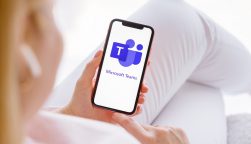Google is ramping up its Workspace offering with new features specifically designed to boost team collaboration and productivity.
The picture-in-picture mode (PiP) feature — which started rolling out June 16, allows users to see up to four video tiles in a floating window on top of other platforms — making multitasking easier.
Meetings can also be joined directly through Google Docs, Sheets and Slides, allowing everyone to collaborate and communicate in real-time, all from the same tab. Plus, Google’s multpin functionality — also just released, will allow users to pin three items in Google Meet, including presentations and people in your team, making your meetings more inclusive and accessible.
As one of the most popular big tech brands worldwide, Google is known for its intuitive tools, ease and accessibility, but with web conferencing services tools like Zoom already hot on its tail, Google Meet has fierce competition and it knows it.
Google Supporting Hybrid Working
This latest release comes as part of Google’s commitment to help businesses to improve ways of working – with plans to introduce more new features in the coming months, designed to help teams of all sizes stay more productive, connected and engaged when working from home, or in the office.
For most companies working in a hybrid model, meetings typically include in-person and remote attendees, and it’s essential that each hybrid meeting experience is unified and productive for all. We continue to make enhancements to Google Meet to help ensure that all video meetings are secure and inclusive no matter the location or device preference. – Dave Citron, Director of Product Management, Google Meet and Voice
How Does PiP Work?
Picture-in-picture mode allows users to navigate away from Google Meets and open a floating window with up to four video tiles. The floating window will show tiles from other attendees on your call, and will stay on top of your other applications, allowing you to use multiple apps while still participating in your call.
Within PiP mode, users can mute their microphones, control their camera, leave the call, and jump back into the Meet tab with ease. Meeting presenters will also be able to view chat notifications, hand raises and join meeting requests, making the presentation experience even smoother.
The feature is available to all Google Workspace customers, including legacy G Suite Basic, Business customers and people with a personal Google account.
What’s Next For Google Meet?
Google Meet plans to roll-out more improvements in the coming months, including automatic noise cancellation on all Google Meet hardware for Companion mode for in-room settings, and the option to add personal video tiles to make it easier for other attendees to see their expressions and gestures. Another key areas of focus for Google Meet is the livestream experience — plans to add Q&A polls, and the ability to livestream meetings directly in YouTube are also on the agenda.
See Google stacks up against its competitors in our full Google Meet review.
| Starting price The lowest starting price for a paid plan. The lowest price available for your business will depend on your needs. | Free plan | Best for | Maximum participants | Pros | Cons | ||
|---|---|---|---|---|---|---|---|
| | | | | | |||
| Beginners | Security | Google Workspace users | Microsoft 365 users | Team messaging | |||
| 300 | 200 | 1,000 | 300 | 50 | |||
|
|
|
|
| |||
|
|
|
|
|
If you click on, sign up to a service through, or make a purchase through the links on our site, or use our quotes tool to receive custom pricing for your business needs, we may earn a referral fee from the supplier(s) of the technology you’re interested in. This helps Tech.co to provide free information and reviews, and carries no additional cost to you. Most importantly, it doesn’t affect our editorial impartiality. Ratings and rankings on Tech.co cannot be bought. Our reviews are based on objective research analysis. Rare exceptions to this will be marked clearly as a ‘sponsored’ table column, or explained by a full advertising disclosure on the page, in place of this one. Click to return to top of page









